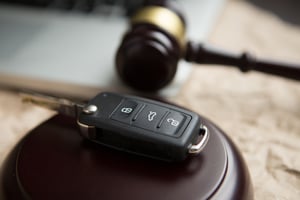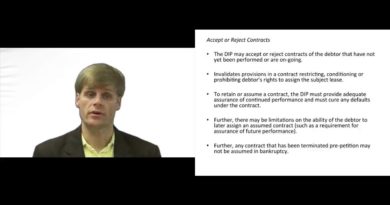Surrendering a Car in Bankruptcy in St. Paul, Minnesota
A debtor who is financing a vehicle and is planning on filing for bankruptcy, has the option to either retain the vehicle and continue making payments on the vehicle or voluntarily surrender the vehicle and give it back to the car lender. When a debtor voluntarily surrenders a car, the car is returned back to the car dealership and the debtor ceases to make payments on the car.
The car loan will become eliminated and the balance owed on the car will turn into an unsecured debt that will be discharged in the bankruptcy. After a debtor surrenders a car in their bankruptcy, the car lender cannot sue the debtor for a deficiency. There are several advantages to voluntarily surrendering a car in bankruptcy. Sometimes, a debtor’s car payments have become unaffordable and voluntarily surrendering the car back to the car lender will allow a debtor to free up financial space to spend on other necessarily living expenses. Moreover, if the debtor’s vehicle has little to no equity, it might be beneficial to surrender the car and walk away from the deal all together, without having to owe any further payments on the car, and look for a new car instead, with better terms. What happens if a debtor is interested in voluntarily surrendering a car but has a cosigner on the car loan? If a debtor has a cosigner on the car loan, the cosigner will still be liable for the deficiency balance that remains after the auction sale of the car. However, the cosigner may file their own bankruptcy and discharge that deficiency balance. The best time for a debtor to surrender their vehicle is, after thirty days have passed from the date of the debtor’s 341 hearing or “meeting of creditors.”
The reason for this time frame is due to the fact that the bankruptcy trustee legally has thirty days after a debtor’s 341 hearing, to make any objections. Once the thirty days have passed and there is certainty that the trustee has not made any objections, then all of the debtor’s property and assets revert back to the debtor and are not a part of the bankruptcy estate no longer. At that point, it is safest for a debtor to voluntarily surrender their car. Before a debtor voluntarily surrenders their vehicle, it is best for the debtor to make a phone call to their car lender and arrange a date and a time for the actual surrendering to take place. The debtor will arrange for either the car lender to pick up the vehicle from the debtor, or the debtor may drop off the vehicle at the car dealership. It is important to remember that while a debtor is driving and using the car before it is surrendered and the debtor is not making payments to the car lender, the car lender can legally file a motion for relief, asking the bankruptcy court for permission to repossess the vehicle. It is not likely however, and often times a debtor may be better off saving those car payments and using those funds for other necessary living expenses.
CALL NOW FOR A FREE STRATEGY SESSION FROM A MN BANKRUPTCY LAWYER AT LIFEBACK LAW FIRM
To learn and receive more advice regarding surrendering a vehicle during bankruptcy, come see us at our new office in St. Paul, Minnesota, or come visit us at LifeBackLaw.com!







